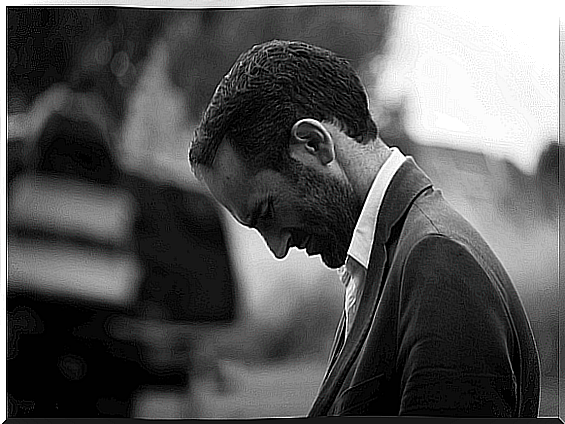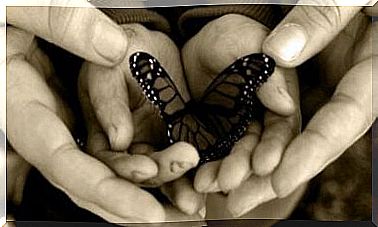Helping Someone With Borderline Personality Disorder

Few personality disorders are as complex and devastating as borderline personality disorder (BPD). We could talk about treatment, biology or psychology, but it is also about the psychosocial environment of the patient.
Often his or her family and friends do not know what to do, what not to do, how to help and care for them. Therefore, the question in this article is: How can we help someone with borderline personality disorder?
Many times when we talk about mental illness, we only list symptoms, origins and triggers. However, we forget an important aspect.
We forget to consider the personal and relational world of the person with the disorder. While difficult to think about, they may feel lost, suffocated and imprisoned by their own minds.
Every expert in psychology knows that nothing is as challenging to evaluate and treat as personality disorders. There is a lot of symptomatic overlap, many false positives (poor diagnoses), and the enormous psychopathological maze is often overlooked.
Manuals such as DSM-V help you clarify some of the symptoms. But it is easy to see how it can be so difficult to know how to help someone with borderline personality disorder.
Families with people with this condition know that not everything their loved ones do or suffer is found in a book. Most of the time, the targets and the direct victims are their instability, paranoid thoughts, existential emptiness and dictatorial thoughts, the people closest to the suffering: their loved ones.
Therefore, it is important to assess the family environment of someone suffering from BPD.

General characteristics of people with borderline personality disorder
People with BPD are often characterized by instability in their personal relationships and self-esteem.
De…
- Has extreme mood swings.
- Can idealize their loved ones only to devalue and humiliate them later.
- Have chronic feelings of emptiness and abandonment.
- Have paranoid thoughts or…
- Suffers from self-harm or suicidal tendencies.
- Uses a wide range of defense mechanisms, both negation and projection. These make it even harder for them to become aware of their illness and take responsibility for themselves.
It should be noted that, like many other mental states, there is no “magic cure” for borderline personality disorder. There is no infallible therapy to disable the roller coaster of mood swings, fear and emptiness.
But what we have at our disposal are treatments that can provide emotional stability and better relationship quality. This is the first step in knowing how to help someone with borderline personality disorder.
There is one important aspect of caring for someone with BPD that we cannot overlook: family support. This is the most basic tool for mental illness. We must offer adequate management of strategies in their personal environment and learn to live together and help them.

How to help someone with borderline personality disorder
People close to the patient often feel guilty. They have doubts, they feel responsible for relapse, self-harm. They feel that they should have known better, said something earlier. When we have someone we love with BPD, we need to consider these three aspects:
- We have not caused the disease.
- We can not cure it.
- And we can not control it.
Once these aspects are clarified, we can begin to help our loved one. Let’s continue with some practical guidelines:
- Nothing is more important than understanding what is happening and why they are acting the way they are.
- As we said at the beginning, this disruption is both complicated and devastating. Sometimes, along with the disorder itself, the person we love so much will experience depression, bipolar disorder, anxiety disorders, eating disorders and substance abuse.
- It is important to know all the symptoms and characteristics.
- Although BPD can be treated, the patient often avoids getting help or skipping treatment.
- Therefore, it is important that we encourage them to continue with the therapy and any medication.
How to help someone with borderline personality disorder: Communication
People with borderline personality disorder can say cruel and irrational things. They fear being abandoned and excluded, so they break out in rage and verbal abuse.
- Specialists say it’s like having “auditory dyslexia.” They hear disordered words without context.
- When they are verbally aggressive, one should say “now is not a good time to talk”. Then we should make sure they know they are important to us and we will communicate when they are more relaxed
- When they are calm, we should focus on their emotions more than their words to make them feel validated.
- It does not matter if what they say does not make sense or is irrational. We need to make them feel heard and supported.
- If, at any time, they return to aggression, it is best to give them space instead of being sucked into a discussion with them.

Set healthy boundaries
One of the most effective ways to help someone with borderline personality disorder is to help the person control their behavior. To do that, we must set boundaries and ask him to adhere to those boundaries. To self-regulate and above all to understand the importance of sticking to a treatment.
- All family members must accept the boundaries and rules.
- What is and what is not allowed should be decided and communicated.
We must say what is not allowed clearly and distinctly, but with love. “We love you and we want this to work. To do this, you must understand that if you talk to us like this or do these things, you are harming us and yourself. We can not accept these things and ask that you make this change for all of us ”.
What we should not do with a person with BPD
- True or give ultimatums
- Tolerate abuse
- Let them stop the treatment
- Ignore suicide threats
To help someone with BPD, we need to take care of ourselves
We can take care of ourselves by:
- Do not isolate ourselves or build our whole life around the person with borderline personality disorder.
- Do not neglect our health.
- Join support groups with others who are in the same situation.
- Learn techniques for dealing with stress.
Finally, this collaboration between the patient, the family and the professional therapists is not easy, but it is possible. It is a daily challenge to help someone with borderline personality disorder. A bumpy but rewarding path where we can minimize impulsivity and sow the seeds of rational decision making.









